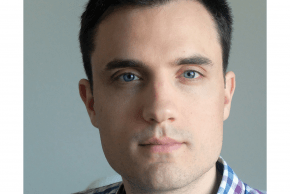Séminaire : Martin Genet
Ajouter au calendrierMultiscale Modeling and Estimation of Lung Poromechanics
In this talk, I will present recent and ongoing works first on the modeling of the lungs at both alveolar, tissue, and organ scales; then on the estimation of such model parameters based on clinical data toward clinical applications. More specifically, starting with tissue scale modeling efforts, I will introduce a general theory of poromechanics [Chapelle & Moireau, 2014], and describe constitutive choices suitable for the lungs [Patte et al., 2022b]. Then, at the organ scale, I will introduce various sets of boundary conditions that we proposed for the lungs, describing the organ environment with various levels of details [Patte et al., 2022b; Peyraut & Genet, n.d.]. I will finish the modeling part of the talk with current work at the alveolar scale, including a consistent formulation of the micro-poro-mechanics problem as well as a bridge between micro- and macro- poro-mechanics [Álvarez-Barrientos et al., 2021; Manoochehrtayebi et al., n.d.].
In the second part of the talk, I will present the personalization pipeline we designed alongside the model, in order to personalize parts of the model geometry, behavior and boundary conditions based on clinical data [Patte et al., 2022a; Laville et al., 2023]. This allows to build digital twins of patient organs, which could serve as biomedical engineering tools to better diagnose, prognose and ultimately treat various diseases. As an example, I will discuss early results obtained on Idiopathic Pulmonary Fibrosis, a progressive form of interstitial lung disease that has a strong impact on the tissue mechanical properties and could be strongly influence by the tissue stresses and/or strains, but that remains poorly understood, poorly diagnosed, and poorly treated [Patte et al., 2022a; Laville et al., 2023].
References
Álvarez-Barrientos, F., Hurtado, D. E. & Genet, M. (2021). Pressure-driven micro-poro-mechanics: A variational framework for modeling the response of porous materials. International Journal of Engineering Science. https://doi.org/10.1016/j.ijengsci.2021.103586
Chapelle, D. & Moireau, P. (2014). General coupling of porous flows and hyperelastic formulations— From thermodynamics principles to energy balance and compatible time schemes. European Journal of Mechanics Part B: Fluids. https://doi.org/10.1016/j.euromechflu.2014.02.009
Genet, M., Stoeck, C. T., von Deuster, C., Lee, L. C. & Kozerke, S. (2018). Equilibrated Warping: Finite Element Image Registration with Finite Strain Equilibrium Gap Regularization. Medical Image Analysis. https://doi.org/10.1016/j.media.2018.07.007
Laville, C., Fetita, C., Gille, T., Brillet, P.-Y., Nunes, H., Bernaudin, J.-F. & Genet, M. (2023). Comparison of optimization parametrizations for regional lung compliance estimation using personalized pulmonary poromechanical modeling. Biomechanics and Modeling in Mechanobiology. https://doi.org/10.1007/s10237-023-01691-9
Manoochehrtayebi, M., Bel-Brunon, A. & Genet, M. (n.d.). Micro vs. Macro Poromechanics: General Formulation and Systematic Response Analysis. (In Preparation).
Patte, C., Brillet, P.-Y., Fetita, C., Gille, T., Bernaudin, J.-F., Nunes, H., Chapelle, D. & Genet, M. (2022a). Estimation of regional pulmonary compliance in idiopathic pulmonary fibrosis based on personalized lung poromechanical modeling. Journal of Biomechanical Engineering. https://doi.org/10.1115/1.4054106
Patte, C., Genet, M. & Chapelle, D. (2022b). A quasi-static poromechanical model of the lungs. Biomechanics and Modeling in Mechanobiology. https://doi.org/10.1007/s10237-021-01547-0
Peyraut, A. & Genet, M. (n.d.). Impact of gravity on the lungs during breathing: Modeling and analysis. (In Preparation).
Biography
Dr. Genet is currently Professor in the Mechanics Department of École Polytechnique, Palaiseau, France, with research posting within the M3DISIM team, which belongs to both the French National Laboratory for Mathematics and Informatics (INRIA) and the Solid Mechanics Laboratory of École Polytechnique. Previously he obtained his PhD from École Normale Supérieure, Cachan, France, in 2010, and was then a postdoctoral fellow at the Lawrence Berkeley National Laboratory, California, USA, from 2010 to 2012. In 2012 he obtained a Marie-Curie International Outgoing fellowship to work on patient-specific cardiac modeling, at the University of California at San Francisco, USA, and Stanford University, Palo Alto, USA, from 2012 to 2014, and at the Swiss Federal Institute of Technology (ETH), Zurich, Switzerland, from 2014 to 2015. Over the past few years, he has been involved in many aspects of the research on soft tissue biomechanics and biomedical engineering, including multiscale (in space, i.e., cell/tissue/organ levels, and time, i.e., functioning/remodeling scales) and multiphysics (mechanics/biology coupling, poromechanics, etc.) computational modeling, model-data interaction computer methods (mechanics-regularized motion tracking, parameter estimation, uncertainty quantification, etc.), in silico analysis of various diseases and potential treatments using personalized models/digital twins. For his work, he received multiple grants from the French National Research Agency (ANR), Swiss National Science Foundation (SNF), European Innovation Council (EIC), etc., and was awarded the Young Investigator Award from the Francophone Society of Biomechanics.

